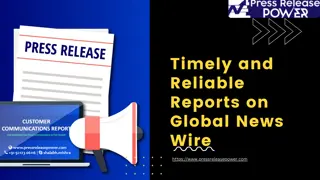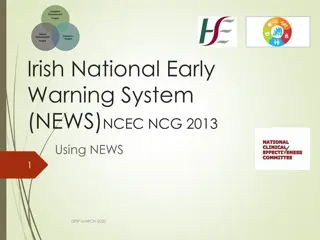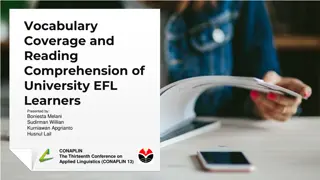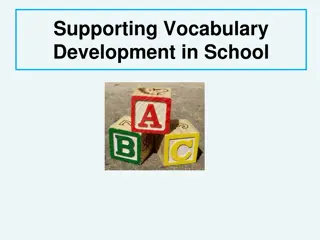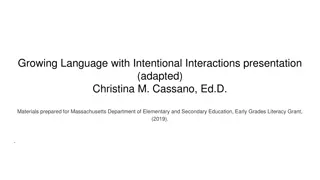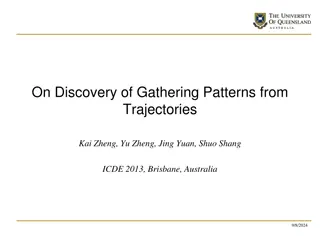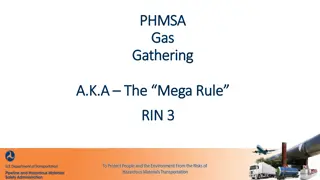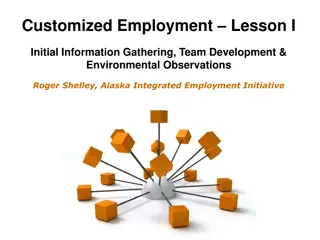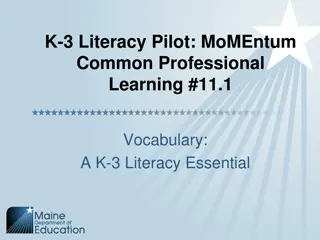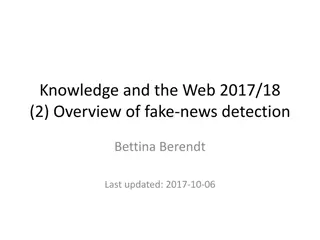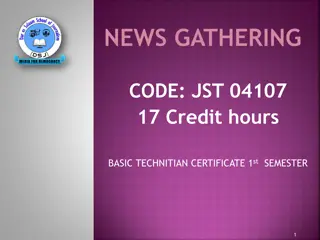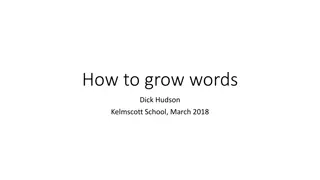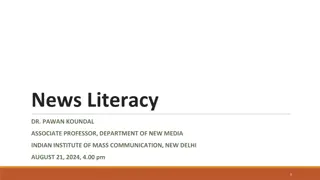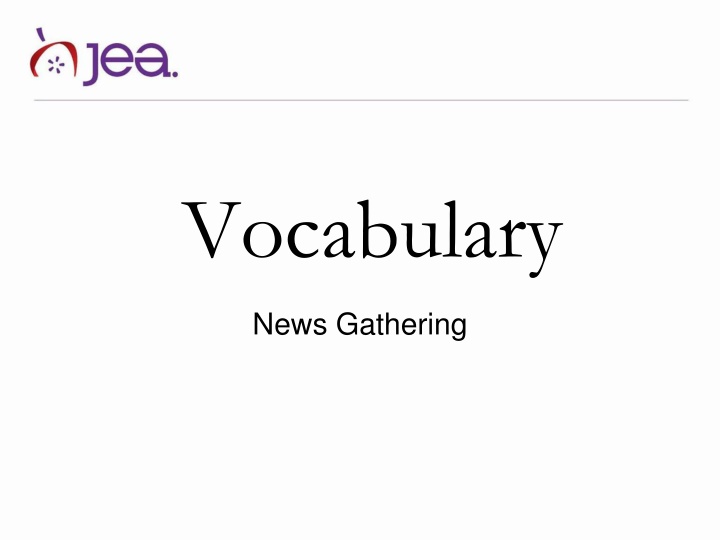
News Values in Journalism: Key Factors for News Gathering
Discover the essential news values used by journalists to determine the newsworthiness of a story. Uncover the significance of factors like timeliness, prominence, conflict, and human interest in news judgment. Explore the "Who Cares?" method and the Rule of Eight in news gathering.
Download Presentation

Please find below an Image/Link to download the presentation.
The content on the website is provided AS IS for your information and personal use only. It may not be sold, licensed, or shared on other websites without obtaining consent from the author. If you encounter any issues during the download, it is possible that the publisher has removed the file from their server.
You are allowed to download the files provided on this website for personal or commercial use, subject to the condition that they are used lawfully. All files are the property of their respective owners.
The content on the website is provided AS IS for your information and personal use only. It may not be sold, licensed, or shared on other websites without obtaining consent from the author.
E N D
Presentation Transcript
Vocabulary News Gathering
News Judgment News Gathering
news judgment This is the process journalists use to determine what is newsworthy based on the following eight factors, also known as news values: timeliness, proximity, consequence/impact, prominence/celebrity, conflict, novelty/oddity/rarity, currency and human interest. Some journalists call the news values the Rule of Eight, because there are eight generally accepted news values, even though they are known by different terms in some cases.
who cares method Who cares? is the question that journalists must pose to themselves when considering story coverage. News values such as timeliness, proximity and impact are used to determine whether readers or viewers will be interested.
timeliness This news value relates to the when of a story. Especially with hard news, this value encourages timely coverage of an event. Think of the phrase, here today, gone tomorrow when considering this news value.
proximity This news value takes into consideration the location in which a news story occurs in relation to its audience.
consequence This news value deals with the importance of a story. It is also sometimes called impact, because news informs readers and viewers about events that have an impact on them.
prominence This news value relates to a story that includes high profile individuals. Celebrities, athletes, or politicians are examples.
novelty Also known as oddity or rarity, this news value focuses on a story that is unusual and highly interesting.
conflict This news value deals with the inclusion of two or more forces going at each other.
human interest This news value deals with the emotional qualities of a story. Does the story evoke an emotional response?
currency This news value deals with stories that are of high interest to the public; usually, these stories are based on topical, current events. Sometimes stories have currency simply because a lot of people are talking about them and sharing them in social media, not because of any other inhere
Research News Gathering
research Reporters conduct research to develop background information for their stories, to locate sources, and to gain knowledge of their sources and topic. Internet searches, database use, public records and polls and surveys are some of the tools reporters use for research.
observation Other than interviewing, observation is the most essential tool reporters have for gathering information. There s no substitute for being there. Reporters witness events with their own eyes and take notes. Also, when interviewing, reporters observe the subject and the surrounding environment, like a detective, looking for clues.
primary source In background research, primary sources are the original material, such as a public record, a transcript of a trial or speech, or a letter or email written by a key witness or the subject. With interviewing, primary sources are the people with first-hand information, who have direct experience of a story topic or event.
secondary source Information presented in response to first- hand events or experiences. In interviews, this is information that might be called hearsay in a trial -- information that has been passed down from one person to the person being interviewed. In research, secondary sources are reports derived from primary sources, such as articles from magazines or newspapers.
validity Information that is factual, unbiased, well- sourced and based on reliable research, produced by qualified authors. Almost anyone can publish anything on the Internet, which means you have to do some thinking and judging to decide whether the information you have is true. Some clues to start with: Look for articles that are dated and have an author s name. Then look for sources of the information being reported.
reliability Information that is based on on primary research by qualified, unbiased researchers. Reliable information is usually reported in more than one place and is itself based on reports of research from reliable sources. To start with, consider the source. If it s a well- known research center or university, great. If no source is cited, be wary. If it s an organization whose main function is to promote a product, be skeptical.
documents Type of source used to provide information for a story. Examples include public records, journal articles and letters or emails. These can be primary or secondary sources, but it s best to use the primary documents as sources whenever possible. If you use secondary sources, make sure they cite where they got the information.
transcript This is a written account of a spoken event such as a speech, a press conference, or an interview. A printed Q-and-A would serve as an example of this.
computer-assisted reporting The use of computers to gather information and analyze data. For example, journalists use databases to receive and analyze information and statistical data to help develop background on a story. Reporters also use social media to gather a wide range of thoughts, opinions or points of view on an issue or event.
crowdsourcing This is the use of a group of people to gain information, usually through the Internet. Social media is a platform for this. Obviously, there are major issues with reliability and validity with this information, but for eyewitness reports and opinions on issues, this is a great way to build a consensus and report some of the emotion an event or issue invokes.
open source journalism Sharing of information by reporters and involved citizens working on a story. The emphasis is on collaboration and citation of primary sources.
database Organized, searchable information found on the computer. Databases can be searched. There are two main types: 1) databases of articles, in which you can search publications for keywords; and databases of data in which you can sort information various ways to see connections. There are several databases dedicated to journalistic research. Investigative Reporters and Editors (www.ire.org) provides databases mostly from federal records. Your school media center also has databases available where you can search for reports of recent scientific research and other journal articles.
data The factual information used in a story. Usually, data refers to numerical information gathered through database research, but it may also refer to the results of polls or surveys, or other lists of facts.
public records Documents that are available for public use. This tends to refer to official documents that are accessible to the public, lacking any confidentiality or exemptions to open records laws.
open records laws These are laws that allow reporters to access official government records at the local or federal levels. Laws vary by location and not all records are accessible. At the federal level, the Freedom of Information Act (FoIA) makes most records kept by the U.S. government open and available to the public.
sunshine laws Regulations requiring openness in government. Sunshine laws make meetings, records, votes, deliberations and other official actions available for public observation, participation and/or inspection. Sunshine laws also require government meetings to be held with sufficient advance notice and at times and places that are convenient and accessible to the public, with exceptions for emergency meetings. http://www.investopedia.com/terms/s/sunshinelaws.asp
panel discussion A group of people connected to a topic come together to present and answer questions from a panel audience. This is an excellent method of gathering information for special issue coverage.
poll A survey of a sample population to acquire information that shows trends, provides statistical data, and evaluates public opinion.
survey This is a gathering of information based on a sample population, usually open-ended in the type of responses. Surveys can also be used to gather information about the likes and dislikes of a particular group, using a scale for responses (1= strongly disagree; 5=strongly agree).
press conference Also known as a news conference, this format involves a prominent individual who is interviewed by a group of reporters simultaneously.
Interviewing News Gathering
5W and 1H Who, what, when, where, why and how are the building blocks for developing interview questions. In every story, reporters should be able to quickly note the answers to all 5W s after their reporting is done and before they start writing.
open-ended question Questions used in an interview that require a sentence or more as a response. Sources respond in their own words, providing complete thoughts. These questions often begin with why, how, what happened, or tell me about
closed-ended question This is a question that elicits a one-word response, including yes/no questions. Close-ended questions are good for poll questions, but in interviews they are best avoided unless paired with a follow-up question.
follow-up questions These questions are used to develop a response to a recent question during an interview. They can be planned or be the result of listening closely to an answer, particularly if an answer seems incomplete. Follow-up questions also may be asked at a later time after an initial interview.
two-part question Here, the reporter will ask two questions at once to help elicit a response. Here is an example. Where were you when you first heard of the assassination of JFK and how did you react to the news?
rephrase This is a method of clarification. A source might provide essential information that is jumbled or unorganized; interviewers redirect or rephrase the question to get a clearer response. In order to use rephrasing, reporters must listen carefully during the interview.
expert A source who is highly knowledgeable about a story topic, often an adult or someone who is directly involved with the event or topic.
quotation Direct expression of a source. Quotations, or quotes, are the word-for-word response by a source that requires quotation marks within a story. Indirectly, it is a paraphrasing of comments or information provided by a specific source.
direct quote The exact words provided by a source, usually gained through an interview. Direct quotes must be contained within quotation marks. Punctuation goes within the quotation marks and attribution goes after the first sentence of the quote.
indirect quote Information provided by a source that is paraphrased by the writer and used without quotation marks. This is usually a close rephrasing of something someone said, but not word-for-word. Indirect quotes must also be attributed.
attribution The identification of the source providing information in a story. Usually, it is the name of the person quoted, but attribution is also required when journalists cite researched information or data.
reaction This is a comment made by a source when asked to respond to an event, issue, topic or a comment made by another source or story subject. This should be considered as a type of question development.
formal interview This is a well-planned interview, usually a sit- down between interviewer and interviewee. Generally, the interview is conducted within the environment of the person being interviewed, such as in the principal s office for an interview with the principal or at the gym for an interview with a coach.
softball questions These are the easier, uncontroversial questions that a reporter usually uses to begin an interview. These types of questions help to make the source comfortable. If a story might involve tough, probing questions, this technique establishes a conversational tone, thus creating a positive reporter-source relationship.
fact checking This is a process of checking facts and quotes for accuracy and verification. News agencies may have a person designated to perform fact-checking duties, but this can also occur as part of the interview process.
verification This is the act of proving the accuracy of gathered information. Fact-checking is one example of how verification occurs. Reading back or reviewing quotes with a source is another example.

